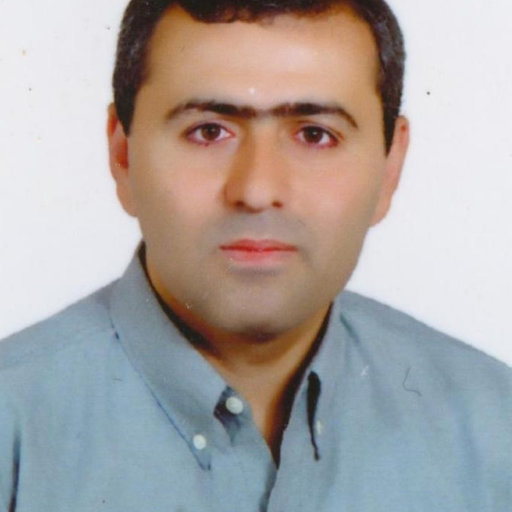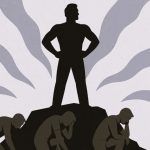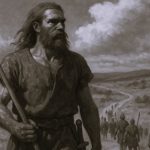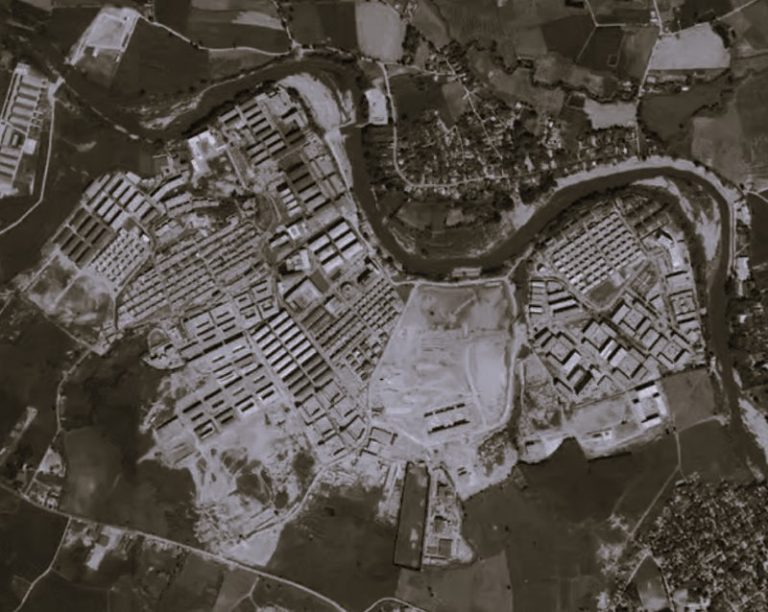
Among the first three manuscripts written in Persian, Akhawayni’s Hidayat al-muta’allemin fi al-tibb was the most significant work compiled in the 10th century.

By Dr. Samad EJ Golzari, et.al.
Tuberculosis and Lung Disease Research Center
Tabriz University of Medical Sciences
Abstract
Among the first three manuscripts written in Persian, Akhawayni’s Hidayat al-muta’allemin fi al-tibb was the most significant work compiled in the 10th century. Along with the hundreds of chapters on hygiene, anatomy, physiology, symptoms and treatments of the diseases of various organs, there is a chapter on sleep paralysis (night-mare) prior to description and treatment of epilepsy. The present article is a review of the Akhawayni’s teachings on sleep paralysis and of descriptions and treatments of sleep paralysis by the Greek, medieval, and Renaissance scholars. Akhawayni’s descriptions along with other early writings provide insight into sleep paralysis during the Middle Ages in general and in Persia in particular.
Introduction
Sleep paralysis, a rapid eye movement (REM) parasomnia, is characterized by a period of inability to perform voluntary movements at sleep onset (hypnagogic form) or upon awakening (hypnopompic form).1 During sleep paralysis, although limb, trunk, and head movements typically are not possible, ocular and respiratory movements are intact. The experience is frequently accompanied with panic, enhanced by the inability to speak or breathe.2 Sleep paralysis occurs as an isolated form, in a familial form, and as one of the classic tetrad of narcolepsy symptoms. Apart from therapeutic approaches toward sleep paralysis, controversial reports exist in the literature regarding its early description. Accordingly, the earliest description of sleep paralysis dates back to 1664 by the Dutch physician Isbrand van Diemerbroeck.3 In almost all the earlier descriptions, the word “night-mare” has been used to portray sleep paralysis.4,5
Persia has a long history of medical practice and study. During the Middle Ages, scholars of different religions, such as Muslim, Christian, or Jewish, contributed to the development of Islamic medicine, later influencing the rise of European science during the Renaissance.6 Thanks to the translation and assimilation period (ca 750–900), the Samanid dynasty (819–999) coincided with the appearance of the renowned scholars Muhammad ibn Zakariya al-Razi or Rhazes (ca 865–925), Ali ibn al-Abbas al-Majusi or Haly Abbas (930–994), and Abu-Ali al-Husain ibn Abdollah ibn Sina or Avicenna (981–1037).7 These polymaths were not only responsible for accumulating all the existing information on medicine of the time but adding to this knowledge by their own perceptive observations, trials, and skills. In the era of Arabic language domination in the scientific literature, Hakim Maysari, Abu Mansur Muvaffak Harawi, and Akhawayni Bokhari were three first authors who wrote their treatises in Persian. Hakim Maysari composed medical poems (Danishanameh) in 980. Harawi compiled the Book of the Remedies (Kitab al-Abnyia an Haqaiq al-Adwiya) between 968 and 977. Undoubtedly, the most significant work of the three was that of Akhawayni Bokhari, the Hidayat.6,8,9 Herein, we review the teachings of Akhawayni on sleep paralysis (night-mare) along with a glimpse at those of the Greek, medieval, and Renaissance scholars in this regard. To avoid confusion with the modern use of the term ‘nightmare’ (a long frightening dream waking the dreamer), the term “night-mare,” with a hyphen, is used throughout this paper to designate sleep paralysis.
Biography

Akhawayni Bokhari, Abubakr Rabi ibn Ahmad, worked and lived in Bukhara most likely all his life, a city currently in the Republic of Uzbekistan located along the Silk Road. Bukhara prospered during the Samanid era when it became one of the intellectual centers of the Islamic world, and Avicenna resided there for a period of time. Yet little is known about the life of Akhawayni; it is not precisely known when he lived.10 However, Mojtaba Minovi, a contemporary Iranian historian, has estimated that Akhawayni had written his prominent book Hidayat al-muta’allemin fi al-Tibb before 983 AD.11 Akhawayni was the student of Abu al-Qasem Maqanei Razi, who himself studied under Abubakr Muhammad ibn Zakariya Razi, Rhazes (865–925).12 Although Akhawayni documented his 20-year medical experiences in the Hidayat, three of his monographs on the pulse (Kitab al-Nabz), anatomy (Kitab al-Tashrih), and medical material (Qarabadin) have been indicated in the Hidayat as well. These three manuscripts have not survived.13 Throughout his clinical experience, Akhawayni tested the views of his predecessors, among which are Galen, Hippocrates, Rhazes, Yahya ibn Sarafyun, and only occasionally Dioscurides and Archigenes together with Aristoteles, with his own experiments.7,10 While he indicates others’ errors several times, he also freely declares when his own experimental treatments end in failure. Akhawayni was also greatly experienced in treating melancholy; hence was known as the “physician for the insane.”12
The ‘Hidayat’
Hidayat al-Muta’allemin fi al-Tibb (Learner’s guide to medicine), the oldest extant treatise on medicine written in new Persian, is Akhawayni’s only existent book and sole source of information about him. The Hidayat was a relatively short and simplified digest of medicine at the time, providing a glimpse of the high level of medical education during the Samanid period. Although dedication of the books, such as Hakim Maysari’s Danishanameh, to powerful rulers or wealthy patrons was the custom of the times,14 Akhawayni dedicated the Hidayat to his son and to other students of medicine. Akhawayni indicates that he had written his book in a “light and simple” style to help beginners.12 Some years after the death of Akhawayni, three known manuscripts of the Hidayat were copied. The oldest one, copied in 1058, is the manuscript in the Bodleian Library, Oxford ( Figures 1 and and 2). This copy belonged to Prince Farhad Mirza Motamed al-Dowleh, the son of Abbas Mirza (a Qajar crown prince of Persia in 1799). The second (dated 1100) and third (copied sometime in the 11th century) copies are in the Fatih Library of Istanbul and the Iranian National Library of Malek in Tehran, respectively.11,12 Dr Jalal Matini, a contemporary Persian writer, compared the three existing manuscripts and published a literary edition of the Hidayat in 1965.12


Although more famous medical books (eg, Avicenna’s The Canon of Medicine and Jorjani’s Treasure of King Khwarazm) succeeded the Hidayat, it did not become obsolete in subsequent centuries.15–17 The fact that its extant manuscripts were copied, a century after it was first written, can be construed as an indication of its widespread use and immense influence on the medicine of its time.7,18 Nizami Aruzi, a Persian poet and prose writer in the 12th century, in his Four Discourses (Chahar Maqala) recommends the Hidayat to medical students as one of the “intermediate works” that every physician should study carefully under a professor’s guidance.19
The Hidayat is divided into three major parts and two hundred chapters (Bab) possibly edited by Akhawayni’s son. The first part, including 51 chapters, provides general information on the four basic humors (akhlat), on the functions of bones, nerves, muscles, and blood vessels, and discusses the principle organs, from brain to bladder and sexual organs; it continues with traditional topics of the human “faculties” and “pneumata” (qowa, arwah), the causes and symptoms of illnesses, and the six “nonnaturals”: the air around us; climates and epidemics; food and drink; movement, rest, and gymnastics; sleep and waking; and retention and excretion. The second part (130 chapters) describes and discusses a long list of localized diseases, roughly a capite ad calcem, as well as other topics, such as wounds and poisons. The third part provides information on fevers, urine, hygiene, and pulse in 19 chapters.10 Prior to description and treatment of epilepsy, there is a chapter on sleep paralysis (night-mare). What follows is a translation of the chapter related to sleep paralysis.
From the ‘Hidayat’
The night-mare (kabus) is an introduction to epilepsy and it is caused by rising of vapors from the stomach to the brain. This disorder mostly affects people with cold temperament in the brain; cold blood flows in the brain and its vessels. The therapy includes bloodletting from the superficial vein of the arm and from the leg vein and thinning the diet, especially in patients with red eyes and face (plethora). Ascending vapors of phlegm from the stomach or other organs to the brain may lead to suffocation of the sleeping patient. Its treatment is the same as for phlegm-type epilepsy, and in cases with continuous attacks, the night-mare may result in epilepsy.
In the succeeding chapter on epilepsy, Akhawayni writes “… and treatment for it (phlegm-type epilepsy) is purgation …”
Discussion
There are controversial notes on early descriptions of sleep paralysis in the literature. Silas Weir Mitchell is usually credited with the first description of “night palsy” in 1876.20,21 On the other hand, Baumann et al21 believed that Swiss-born artist Heinrich Füssli’s depiction of sleep paralysis in his painting Der Nachtmahr(The Nightmare) in 1781 was incomparable in the world literature. In a recent historical note, description of sleep paralysis by Isbrand van Diemerbroeck, a Dutch physician (1609–1674), was suggested as the earliest detailed scientific accounts of the condition.3 Nevertheless, studies on the Greek and Islamic Golden Age scholars reveal much earlier scientific descriptions of sleep paralysis. Throughout history, the word “night-mare” was conceived to describe sleep paralysis.4,5 In his Hidayat, Akhawayni has attempted to realistically rather than supernaturally discuss the etiology of and therapeutic approaches toward sleep paralysis (night-mare) in a distinct chapter. These descriptions lacked a picture of the known features of sleep paralysis (eg, feeling of pressure on the chest). However, Rhazes (865–925), whose principles of medicine constituted the basics of Hidayat, described sleep paralysis (night-mare) in his Al-Hawi (Liber Continens) in more detail (Rhazes: “… when the night-mare (kabus) happens, the person senses a heavy thing upon him and finds himself unable to scream …”).22 Accordingly, Akhawayni intended to describe sleep paralysis through the similar word “night-mare.”
The description of sleep paralysis and associated hallucinations dates back to 400 BC in a Chinese book of dreams and later by Greek scholars.23 Throughout history, sleep paralysis and the similar term “night-mare” have been widely accompanied by mythological creatures with paranormal powers (eg, Ephialtes of the Greeks and Incubus of the Romans). Themison of Laodicea (1st century BC), founder of the Methodic School of Medicine, described sleep paralysis (night-mare) along with a supernatural being, the Incubus.24 Later Greek physicians, including Galen, did not believe in the supernatural origin of sleep paralysis (night-mare). Instead, they attributed sleep paralysis (night-mare) to a variety of gastric disturbances following eating of indigestible food, overeating, or abundant alcohol consumption.25,26 Similarly, Akhawayni deemed natural, rather than transcendental, the cause of sleep paralysis (night-mare): “… it (night-mare) is caused by rising of vapors from the stomach to the brain …” Although gastric disturbance no longer has a role in the etiology of sleep paralysis in modern medicine, Akhawayni’s attempts to logically explain the cause of sleep paralysis (night-mare) at the time of superstition superiority is noteworthy. In the Middle Ages, theologians deemed evil powers as the cause of sleep paralysis (night-mare).27 Later during the Renaissance, scholars, such as Philip Barrough (Elizabethan surgeon and physician) and Johann Wier and Isbrand van Diemerbroeck (Dutch physicians) considered sleep paralysis (night-mare) as a disease caused by vapors arising from the stomach.28–30 Readers are referred to the review by Dannenfeldt about theories of the late Renaissance physicians and scholars on sleep paralysis (night-mare).27
In the Hidayat, Akhawayni made an association between sleep paralysis (night-mare) and epilepsy. Such connection between the two disorders can also be found in the writings of the ancient Greek, the Islamic Golden Age (eg, Avicenna), and the late Renaissance physicians.26,27 In modern sleep literature, a complex relationship between epilepsy and sleep exists. There are some reports of epileptic seizures in the form of sleep paralysis attacks.31,32 Similarities between nonrapid eye movement parasomnias and nocturnal frontal lobe seizures as well as their co-existence in the same individual have shed light on the plausible common pathogenic background for the two disorders.33,34 With regard to REM parasomnias, a recent study by Manni and colleagues revealed that REM sleep behavioral disorders were more commonly noted in elderly patients with epilepsy.35 However, further studies are required to discover such connection between epilepsy and REM parasomnias (eg, sleep paralysis). Therefore, no comparison between those of the Hidayat and modern medicine is plausible in this regard.
The therapy for sleep paralysis (night-mare) prescribed by Akhawayni included purgation, venesection, and dietary management. The latter, although interesting, is only a vague approach of “thinning the diet,” as stated by Akhawayni. In this regard, Akhawayni probably adopted these prescriptions from the preceding physicians in ancient Greece and Persia (eg, Rhazes).22,27 There is modern evidence that sleepiness is improved in patients with narcolepsy, one of the classic tetrad of which is sleep paralysis, by a low-carbohydrate and high-protein diet.36–38 However, such a dietary approach has not been clearly associated with sleep paralysis per se. On the other hand, we have been unable to find any report about the therapeutic effects of purgation and venesection on night-mare and sleep paralysis in modern medicine.
Akhawayni’s descriptions along with other early writings provide insight into sleep paralysis during the Middle Ages in general and in Persia in particular. Written in Persian, the Hidayat of Akhawayni was a short and simplified digest of medicine for Akhawayni’s son and other aspiring students of medicine who did not know Arabic nor had access to the larger and more expansive texts, especially those in medieval Baghdad.
Notes
- American Academy of Sleep Medicine. International Classification of Sleep Disorders, revised: Diagnostic and coding manual. Chicago, IL: American Academy of Sleep Medicine; 2001.
- Hishikawa Y, Shimizu T. Physiology of REM sleep, cataplexy, and sleep paralysis. Adv Neurol. 1995;67:245–271.
- Kompanje EJ. “The devil lay upon her and held her down.” Hypnagogic hallucinations and sleep paralysis described by the Dutch physician Isbrand van Diemerbroeck (1609–1674) in 1664. J Sleep Res. 2008;17:464–467.
- Pearce JM. Early descriptions of sleep paralysis. J Neurol Neurosurg Psychiatry. 1993;56:1302.
- Macnish R. The Philosophy of Sleep. New York, NY: Appleton; 1834.
- Elgood C. A Medical History of Persia and the Eastern Caliphate. From the Earliest Times until the Year 1932. Cambridge, MA: Cambridge University Press; 1951.
- Ardalan MR, Shoja MM, Tubbs RS, Eknoyan G. Diseases of the kidney in medieval Persia the – Hidayat of Al-Akawayni. Nephrol Dial Transplant. 2007;22:3413–3421.
- 8. Eknoyan G. Arabic medicine and nephrology. Am J Nephrol. 1994;14:270–278.
- Shoja MM, Tubbs RS. The history of anatomy in Persia. J Anat. 2007;210:359–378.
- Biesterfeldt HH. Akawayni Bokari. In: Yarshater E, editor. Encyclopaedia Iranica. New York, NY: Encyclopaedia Iranica; 1984. pp. 706–707.
- Minovi M. Hidayat al-Muta’allemin dar Tebb. Yagma. 1950;3:497–510.Persian.
- Matini J. Hidayat al-Mutaallimin fi al-Tibb by Abubakr Rabi ibn Ahmad al-Akhawayni al-Bukhari [in Persian] Mashhad, Iran: Mashhad University Press; 1965.
- Rashnozadeh B. Daneshname-ye ‘Adab-e Farsi (Encyclopedia of Persian Language) [in Persian] 2nd ed. Tehran, Iran: Vezarat-e Ershad-e Islami; 2001.
- Richter-Bernburg L, Said HM. Medical and veterinary sciences. In: Bosworth CE, Asimov MS, editors. History of Civilizations of Central Asia. New Delhi, India: Motilal Banarsidass Publishers; 2003. pp. 299–322.
- Matini J. Hedayat al-Motaallemin Fi’l-Tebb. In: Yarshater E, editor. Encyclopaedia Iranica. New York, NY: Encyclopaedia Iranica; 2003. [Accessed November 27, 2011]. Available from:http://www.iranicaonline.org/articles/hedayat-al-motaallemin-fil-tebb.
- Shoja MM, Tubbs RS, Loukas M, Khalili M, Alakbarli F, Cohen-Gadol AA. Vasovagal syncope in the Canon of Avicenna: the first mention of carotid artery hypersensitivity. Int J Cardiol. 2009;134:297–301.
- Hosseini SF, Alakbarli F, Ghabili K, Shoja MM. Hakim Esmail Jorjani (1042–1137 AD): Persian physician and jurist. Arch Gynecol Obstet. 2011;284:647–650.
- Cisne JL. How science survived: medieval manuscripts’ “demography” and classic texts’ extinction. Science. 2005;307:1305–1307.
- Browne EG. Nizami al-‘Arudi al-Samarqandi, Chahar Maqalah (The Four Discourses) Cambridge, MA: Gibb Memorial Trust; 1978.
- Schneck JM. Henry Fuseli, night-mare, and sleep paralysis. JAMA. 1969;207:725–726.
- Baumann C, Lentzsch F, Regard M, Bassetti C. The hallucinating art of Heinrich Füssli. Front Neurol Neurosci. 2007;22:223–235.
- Tabatabaei SM. Al-Hawi by Abubakr Muhammad ibn Zakariya Razi [in Persian] Tehran, Iran: Al-Hawi Pharmaceutical Company Press; 1991.
- Davies O. The night-mare experience, sleep paralysis, and witchcraft accusations. Folklore. 2003;114:181–203.
- Blom JD, editor. A Dictionary of Hallucinations. New York, NY: Springer; 2010. Nightmare; pp. 357–358.
- Craig KT, editor. The Fabric of Dreams: Dream Lore and Dream Interpretation, Ancient and Modern. New York, NY: E.P. Dutton and Company; 1918. Sleep, the mystery; pp. 27–48.
- Adler SR, editor. Sleep Paralysis: Nightmares, Nocebos, and the Mind–Body Connection. Piscataway, NJ: Rutgers University Press; 2011. Continuities: A Transhistorical Bestiary; pp. 37–58.
- Dannenfeldt KH. Sleep: theory and practice in the late Renaissance. J Hist Med Allied Sci. 1986;41:415–441.
- Barrough P, editor. The Methode of Physicke. London, UK: Field; 1590. Of Die Mare, De Incubone; pp. 43–44.
- Wier J. De Praestigiis Daemonum, Et Incantationibus ac veneficiis. Basel, Switzerland: Oporinus; 1568.
- van Diemerbroeck I. In: The Anatomy of Human Bodies, Comprehending the Most Modern Discoveries and Curiosities in that Art: To Which is Added a Particular Treatise of the Small-Pox and Measles: Together with several practical observations and experienced cures. Salmon William., translator. London, UK: Edward Brewster; 1689.
- Schneck JM. Sleep paralysis and nocturnal seizure disorder. JAMA. 1982;247:303.
- Galimberti CA, Ossola M, Colnaghi S, Arbasino C. Focal epileptic seizures mimicking sleep paralysis. Epilepsy Behav. 2009;14:562–564.
- Manni R, Terzaghi M. Comorbidity between epilepsy and sleep disorders. Epilepsy Res. 2010;90:171–177.
- Eriksson SH. Epilepsy and sleep. Curr Opin Neurol. 2011;24:171–176.
- Manni R, Terzaghi M, Zambrelli E. REM sleep behaviour disorder in elderly subjects with epilepsy: frequency and clinical aspects of the comorbidity. Epilepsy Res. 2007;77:128–133.
- Garma L, Marchand F. Non-pharmacological approaches to the treatment of narcolepsy. Sleep. 1994;17:S97–S102.
- Husain AM, Yancy WS, Jr, Carwile ST, Miller PP, Westman EC. Diet therapy for narcolepsy. Neurology. 2004;62:2300–2302.
- Akintomide GS, Rickards H. Narcolepsy: a review. Neuropsychiatr Dis Treat. 2011;7:507–518.
Originally published by Neuropsychiatry Disease and Treatment 8 (2012, 229-234) under the terms of an open access license, republished for educational, non-commercial purposes.







